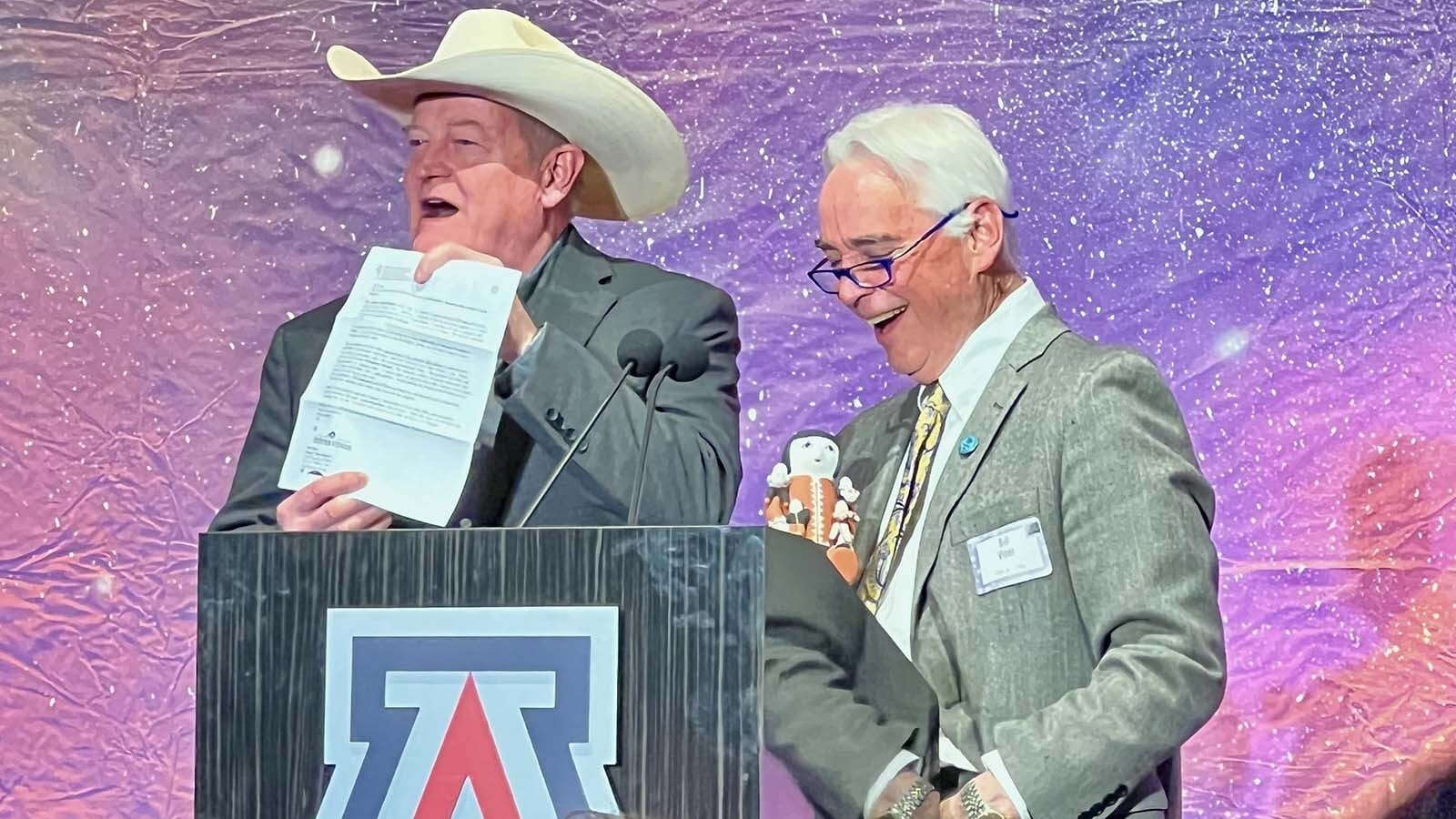The latest weather system will diagonally slice across Wyoming with a blast of winter weather this week. And this time, there will be enough cold and snow to stick around.
The National Weather Service has already issued Winter Weather Advisories and Warnings for most of western and central Wyoming beginning Monday night through Wednesday morning. A slow-moving system will move from the southwest to the northeast of the Cowboy State, bringing the season's first heavy snow to the plains.
“This system is like going on a slot machine where you get three sevens,” said Cowboy State Daily meteorologist Don Day. “It’s not a storm, but a combination of events when the moisture and cold temperatures will be in the right place at the right time in those areas. So, it's a confluence of events all working together.”
The Diagonal Strip
While the latest weather system will impact Wyoming overall, its biggest impact will be in the “strip” it creates as it moves across the Cowboy State. The system will start in the southwest Monday evening and move across central Wyoming into the northeast on Tuesday and Wednesday.
“It’s not a perfect diagonal, but it’s darn close,” Day said. “If you were to draw a line, it would go from Salt Lake City to Evanston, Green River and Rock Springs, then go up through Lander and Riverton.
“Then it’ll move through Casper, up to Gillette, and then to Rapid City. That line is the axis of where the heaviest moisture will be.”
The heaviest impact could be between 3 and 6 six inches of snow in the lower elevation areas along the strip. And this time, Day said there will be enough snow to stick.
“This is going to be mostly snow, so it will be the first significant snow on the plains,” he said. “What will happen is the first inch or two is going to melt, but after that, it's going to stick pretty good. I expect many areas will see it stick, not only the grassy areas but the pavement as well.”
There will be impacts on the edges of “the strip,” but the rest of Wyoming won’t see as much snow.
“That line is the axis of where the heaviest moisture will be,” Day said. “About 75 miles on either side of that line will be the part of the state that's most impacted. The southeast and northwest corners will have impacts, but they won't be as big as those areas on the line.”
Measurable snow on the plains means there will also be a significant amount of snow in the mountains. The Unita, Bighorn and Wind River ranges could get up to a foot of snow from this system, and Casper Mountain will likely be covered in white by the end of the week.
Cold Incoming
The incoming system is part of the weather “roller coaster” Wyoming has been experiencing for the last several weeks, Day said. Brief wet, cold spells have been followed by “rebounds” of warmer, drier days that feel more like the last days of summer than the first days of fall.
Day said there will be another rebound after the incoming system passes. However, warmer days in Wyoming will be waning, especially as the days get shorter.
“We’re going to see more funnel systems come in during the first weeks of November,” he said. “The rebounds of warmer temperatures will not be nearly as fun as they've been here lately. This system will be followed by more funnel systems. It’s the start of a colder trend that's got more legs to it.”
Day took the opportunity to remind Wyomingites that daylight saving time is almost over. Clocks will fall back an hour at 2 a.m. local time Sunday.
That’ll add an hour of daylight to the morning. It also means sunset will happen even sooner, so everyone should anticipate the earlier evenings ahead.
Daylight saving time will begin again Sunday, March 9, 2025.
“We're at the point in the calendar where warm weather is just harder to get,” Day said.

Where And What To Expect
When the next winter weather system arrives late Monday night, Day said Wyoming communities in the strip should expect to wake up to a white morning and potentially hazardous driving.
“If I were to name cities and towns, the heaviest stuff will be in Evanston, Green River, Rock Springs, Lander, Riverton, Casper, Douglas, Buffalo, Gillette, Newcastle and Sundance,” he said. “Those are the places that are going to see the biggest impacts.”
That forecast means sections of Interstates 80, 90 and most of I-25 could be slick with melted snow. Southeast Wyoming won’t be as directly impacted by this system, but Day cautioned Cheyenne and Laramie residents to be careful on their I-80 commutes.
“There will definitely be some impacts in Cheyenne and Laramie,” he said. “Between Laramie and Cheyenne, you're almost up to 8,000 feet on I-80. And then, between Rawlins and Laramie, you are just below 9,000 feet in some spots. I think this catches a lot of out-of-state travelers off guard. It doesn't feel like you're on a mountain pass, but you are.”
The rest of Wyoming can expect a few inches of snow, blustery winds and a steep drop in temperature. High temperatures will be in the 20s and 30s, and a weekend rebound back to the 70s doesn’t seem likely.
Day cautioned Wyomingites to drive carefully over the next few days, especially in the afternoons. That’s when roads tend to get dangerously slick, especially at highway speeds.
“The time of day is really important,” he said. “A lot of accidents on icy roads tend to happen during the late afternoon and evening, when the sun starts to get lower and wet roads get icy, especially at higher elevations.”
Andrew Rossi can be reached at arossi@cowboystatedaily.com.





